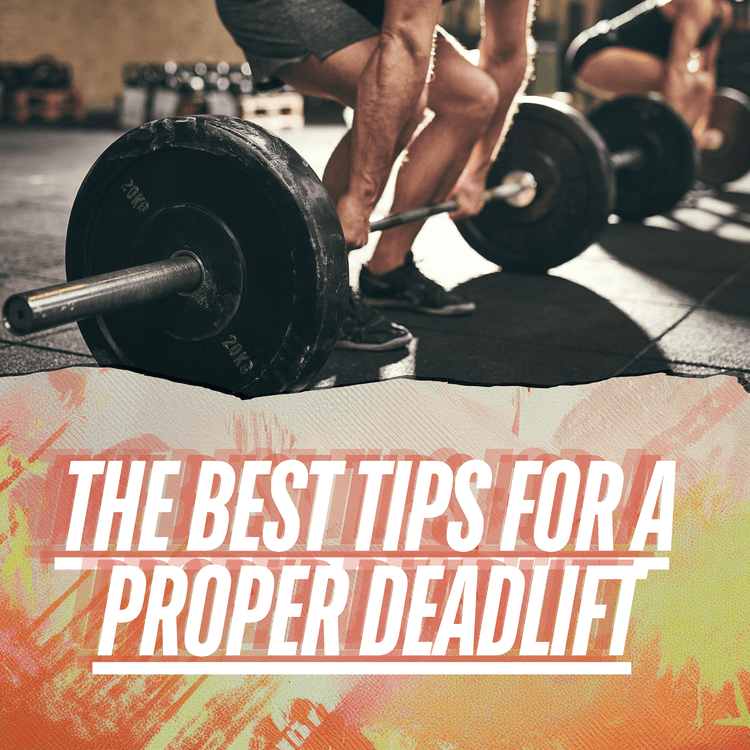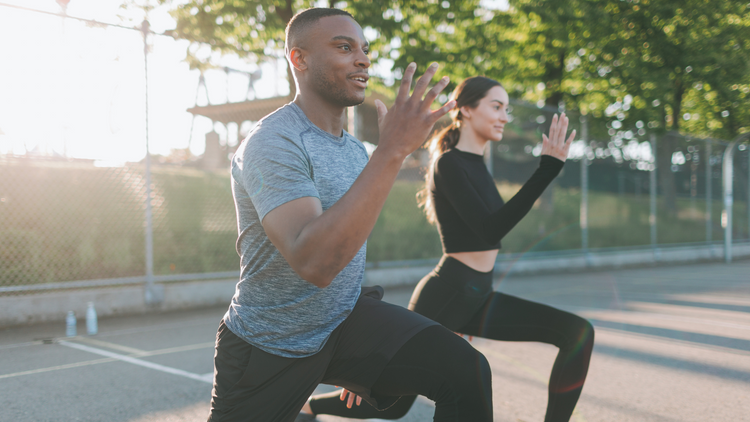Proper Deadlift Form Tips for Home Workouts

Deadlifts are a strong exercise that can change your fitness routine. Whether you're aiming to build strength, improve muscle tone, or improve your overall fitness, proper deadlift form is crucial. Deadlifts are common in home workouts because they are effective and need little equipment. In this article, we'll cover the basics of deadlift form, common mistakes to avoid, the benefits of single leg deadlifts, and the muscles you use during this exercise.
Why Proper Deadlift Form Matters
Keeping proper deadlift form is important for several reasons:
Injury Prevention: Incorrect form can lead to severe injuries, particularly to your lower back. Proper form helps keep your spine neutral and reduces the risk of strain.
Performance Enhancement: Using the right form helps you lift heavier weights safely.
Better Results: Proper form helps you target the right muscle groups, leading to better muscle growth and overall fitness.
To learn more about the benefits of deadlifts, see Deadlift Benefits: 8 Ways This Exercise Boosts Results.
Step-by-Step Guide to Proper Deadlift Form
Doing a deadlift right is key to getting its benefits and avoiding injury. Follow these steps to keep proper deadlift form:
- Stance: Stand with your feet hip-width apart. Your toes should point slightly outward.
- Grip: Bend at your hips and knees to reach down and grab the barbell. Your hands should be shoulder-width apart. You can use an overhand grip or a mixed grip (one hand overhand, one hand underhand).
- Lift: Keep your back straight and your chest up. Tighten your core muscles. Push through your heels and lift the barbell by straightening your hips and knees at the same time. The bar should stay close to your body as you lift.
- Lower: To lower the bar, push your hips back and keep your back straight. Bend your knees once the bar passes them and return the bar to the ground.
Here are some additional tips to keep in mind:
- Keep a neutral spine during the movement to avoid back strain.
- Tighten your core muscles to stay stable and protect your lower back.
- Don't round your back or let your shoulders slump forward.
Common Deadlift Form Mistakes to Avoid
Even with good intentions, it's easy to make mistakes during deadlifts. Here are some common mistakes and how to fix them:
- Rounding the Back: This can cause serious injury. Focus on keeping your spine neutral and tighten your core.
- Using the Wrong Grip: A wrong grip can affect your lift and cause imbalances. Ensure your grip is firm and your hands are shoulder-width apart.
- Not Engaging the Core: A weak core can make your lower back take on too much strain. Always engage your core muscles before lifting.
- Incorrect Foot Placement: Placing your feet too wide or too narrow can affect your balance. Keep your feet hip-width apart.
- Lifting with Your Back: The power should come from your hips and legs. Avoid lifting the weight with your back.
For more details on avoiding these errors, check out Avoid Injury: 8 Common Deadlift Form Mistakes – MTNTOUGH.
Benefits of Deadlift Workouts at Home
Adding deadlifts to your home workouts has many benefits. Here are some key benefits:
- Convenience: You don't need to go to the gym. You can do deadlifts at home.
- Effectiveness: Deadlifts are a compound exercise, meaning they work many muscle groups at once. This makes them highly efficient for building strength.
- Cost-Effective: You don't need much equipment. A barbell and some weights are enough to start. Check out our barbells and bumper plates to get started.
- Flexibility: You can fit your deadlift workout into your schedule anytime.
To make your home workouts even better, consider using gym mats and weight benches from Living.Fit. These can help you maintain proper form and protect your floors.
Single Leg Deadlift: A Variation to Try
If you want to add some variety to your deadlift routine, try the single leg deadlift. This variation can help improve your balance and steadiness.
Here's how to perform a single leg deadlift:
- Stand on one leg with a slight bend in the knee.
- Hold your weight at your side or in front of you (like in the sandbag video above). Check out our dumbbells for this exercise if you need some weight!
- Bend at the hips, lowering the weight towards the floor while extending the free leg behind you.
- Keep your back straight and core tight during the movement.
- Return to the starting position by squeezing your glutes and bringing your extended leg back down.
Benefits of the single leg deadlift include:
- Improved Balance: Working on one leg helps to improve balance and coordination.
- Enhanced Stability: This exercise targets the stabilizing muscles in your hips and core.
- Injury Prevention: Strengthening these muscles can help prevent injuries in other activities.
Give the single leg deadlift a try to add a new challenge to your home workouts.
Muscles Worked During Deadlifts
Deadlifts are a strong exercise that works many muscle groups. Knowing which muscles are worked can help you get the most out of your deadlift workouts. Here’s a detailed look at the muscles used during deadlifts:
- Hamstrings: These muscles at the back of your thighs are heavily used in the lifting phase.
- Glutes: Your gluteal muscles are crucial for extending your hips as you lift the weight.
- Lower Back: The erector spinae muscles help maintain a neutral spine and support your lower back throughout the movement.
- Core: Engaging your core muscles, including the abs and obliques, is essential for stability and proper form.
- Quadriceps: The front thigh muscles assist in straightening your legs during the lift.
- Forearms: Your grip strength is tested as you hold the barbell, using the forearm muscles.
- Upper Back: The traps and rhomboids help keep your shoulders back and chest up during the lift.
For more detailed information on the muscles worked during deadlifts, check out this comprehensive guide.
Conclusion
In summary, mastering proper deadlift form is key for getting the most out of this strong exercise while avoiding injuries. Remember to:
We encourage you to try deadlifts at home with proper form. To make your home workout better, consider using Living.Fit gym mats and weight benches. These tools can give the support and steadiness you need for safe and effective workouts.






